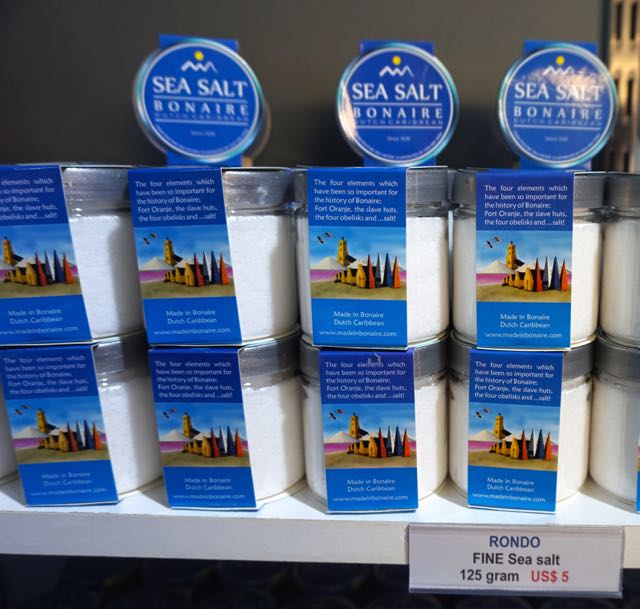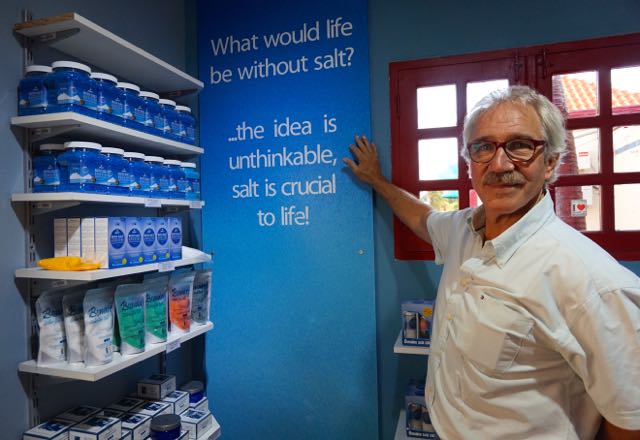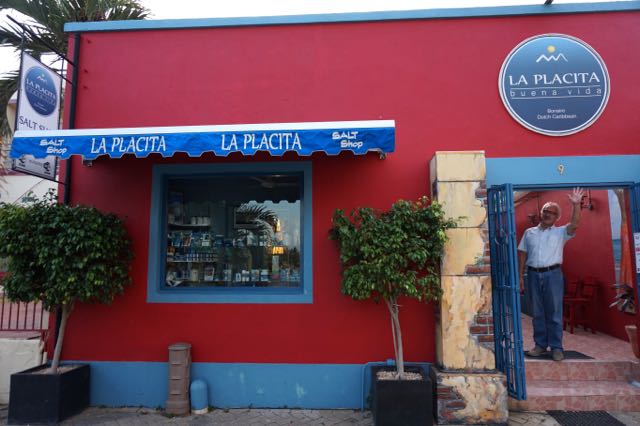Walking around downtown Kralendijk, Bonaire, my curiosity led me into a store called “The Saltman.” Having seen the Cargill Salt hills on the southern part of the island earlier that week, I had some idea about the connection of salt with Bonaire. Production of salt started in Bonaire circa 1636 by the Dutch West India Company and their African slaves. Even today, over 20% of the island is used for production of sea salt, in a completely natural way through sun drying.
Walking in the store, I was completely overwhelmed with “everything salt.” From salt crystals, table sea salt, salt mills, bath bombs, to bath salts and lotions, this was a salty oasis!

I was greeted by the owner Mr. Sjoerd Vanderbrug (aka Saltman) himself. Vanderbrug is Dutch, who moved to Bonaire from Indonesia. Never been I had met someone who was so passionate about salt. He explained to me in what seemed like 100 Benefits of Sea Salt, why salt was the single most important spice that sustained human life, how it has been used over civilizations from preserving food through the winter to exfoliate the skin, that sodium is the sixth most abundant element in the Earth’s crust, how it regulates blood pressure and pH balance, and keeps your teeth clean. He spoke about how the discovery of salt on Bonaire put the island on the map, as there were no other valuable resources. 
So “whats the difference between Himalayan vs Kosher vs Regular vs Sea Salt” I asked the Saltman himself. The difference is in source, production, texture, color and taste. Regular table salt is highly refined and enhanced with iodine (an important dietary supplement), whereas sea salt is made by evaporating water. Himalayan sea salt has a pink color from traces of iron oxide found in it. Kosher salt is more coarse than regular salt and is often used for sprinkling on top of food. When cooked, there is no remarkable difference between the flavors of different salts.
Vanderbrug buys the salt from Cargill and spends considerable effort into marketing the product. He started with a dome shaped box to resemble the salt hill and expanded his packaging to boxes, tubs, salt mills (grinders), loose salt and bags of colored bath salt. When cruisers and vacationers come to Bonaire, they want something they can take home as souvenirs and gift to their family and friends. With the limited number of local products available on the island, Bonaire Sea Salt definitely stands out. It is also available at local restaurants and airport gift shops.

Adjacent to the shop, Vanderbrug also has a coffee shop and a bed and breakfast.